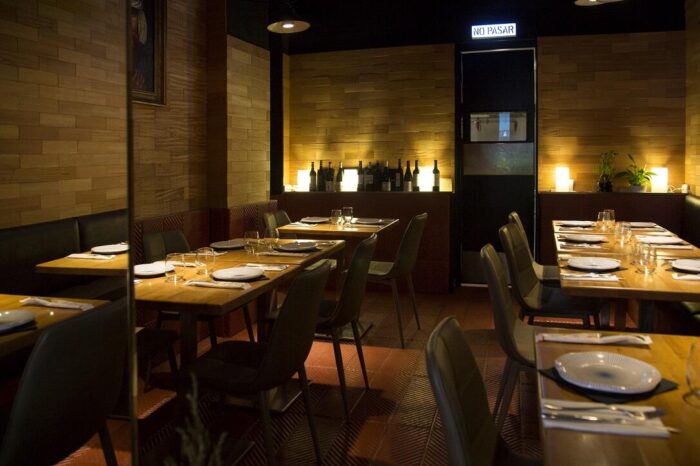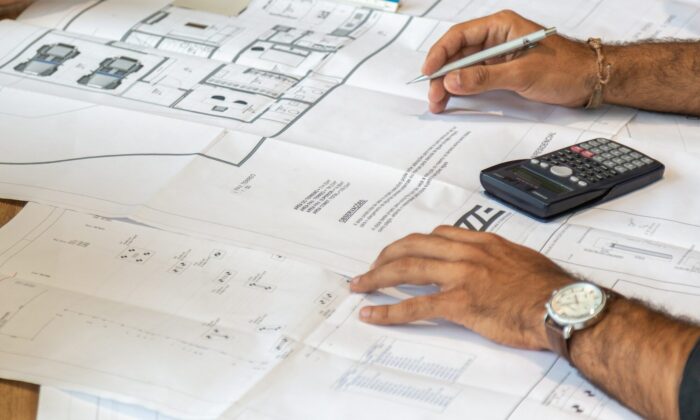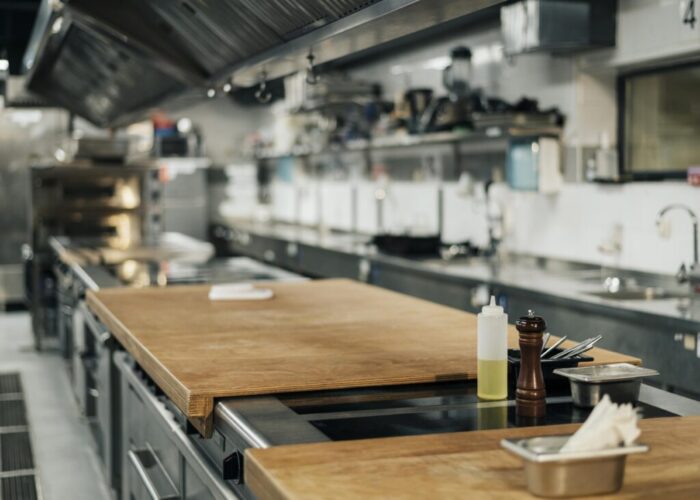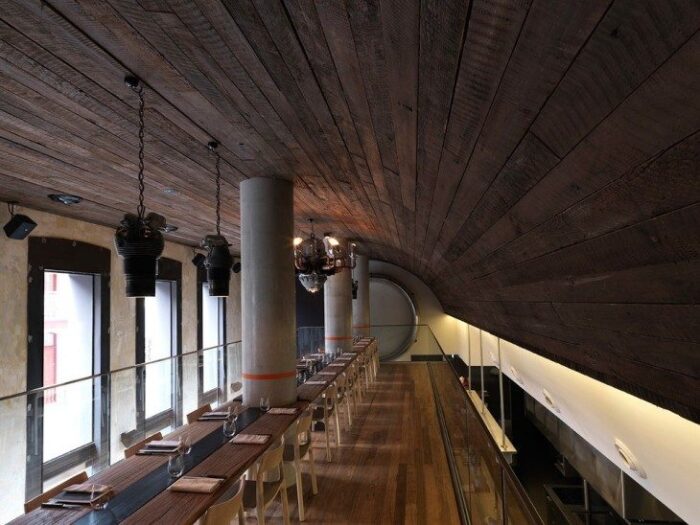
1. Designing the Perfect Restaurant Atmosphere
Creating a remarkable restaurant atmosphere is the key to attracting customers and keeping them coming back. It is crucial to design an ambience that reflects your brand and captures the essence of your restaurant concept. The atmosphere should tell a story and create a memorable experience for your diners.

Creating an Ambience that Reflects your Brand
When designing your restaurant atmosphere, it is important to consider your brand identity and values. Think about the type of experience you want to provide to your customers and how you want them to perceive your restaurant. For example, if you have a fine dining establishment, you may want to create an elegant and sophisticated atmosphere, while a casual setting might call for a more relaxed and cozy ambiance.
Consider elements such as the overall theme, music, artwork, and décor to create a cohesive and immersive experience. Every detail matters, from the furniture to the table settings. Your restaurant should feel like a well-curated space that offers both comfort and visual appeal.
The Role of Lighting and Color in Setting the Mood
Lighting and color play a significant role in setting the mood of a restaurant. Different lighting techniques can create various atmospheres, from romantic and intimate to bright and energetic. Consider using a combination of ambient, task, and accent lighting to create a dynamic and adaptable lighting scheme.
Color psychology also comes into play when designing your restaurant atmosphere. Warm colors like red and orange can stimulate appetite and create a cozy feel, while cooler colors like blue and green can evoke a sense of calmness and freshness. Finding the right balance of colors that align with your brand and concept is essential.
Selecting the Right Furniture and Decor Elements
The furniture and decor elements you choose can greatly impact the overall atmosphere of your restaurant. Comfortable seating is crucial to ensuring a pleasant dining experience, so invest in high-quality chairs and booths that provide both style and functionality.
When it comes to decor, think beyond mere aesthetics. Incorporate elements that tell a story or reflect the theme of your restaurant. This could include artwork, murals, or even unique architectural features. Pay attention to the details, such as table linens, centerpieces, and wall decorations. This will help create a cohesive and captivating atmosphere that resonates with your customers.
2. Navigating Building Permits and Regulations
Before embarking on any construction project, it is crucial to understand and comply with building permits and regulations. Failing to do so can lead to costly delays, fines, and even legal consequences. Navigating these requirements can be complex, but it is a necessary step in the restaurant construction process.

The Importance of Obtaining the Proper Permits
Obtaining the proper permits is essential to ensure that your restaurant construction project meets all legal and safety requirements. Building permits are necessary to demonstrate that your plans comply with local building codes, zoning laws, and fire safety regulations.
Permits are typically required for various aspects of the construction process, including structural changes, plumbing and electrical work, signage, and outdoor seating areas. It is important to research and understand the specific permits and licenses needed for your project to avoid any legal issues down the line.
Understanding Zoning Laws and Building Codes
Zoning laws and building codes outline regulations for land use, property development, and construction. These regulations vary by location, so it is crucial to familiarize yourself with the specific laws and codes applicable to your area.
Zoning laws dictate how your restaurant can be used and where it can be located. They define what types of businesses are allowed in certain areas and the specific requirements for each zone. Building codes, on the other hand, set standards for construction materials, structural integrity, fire safety, accessibility, and more.
Working with professionals such as architects and contractors who are well-versed in local zoning laws and building codes can help ensure compliance and streamline the permitting process.
Working with Architects and Contractors to Ensure Compliance
Collaborating with experienced architects and contractors is crucial to navigating the complexities of building permits and regulations. These professionals have the knowledge and expertise to guide you through the process and ensure compliance with all requirements.
An architect will help you create a design that meets all building codes and zoning laws while also aligning with your vision. They will prepare detailed plans and drawings that can be submitted for permit approvals. A contractor will oversee the construction process, ensuring that all work is carried out according to the approved plans and in compliance with all regulations.
3. Harnessing the Power of Functional and Efficient Layouts
Creating a functional and efficient layout is essential to maximize productivity, streamline operations, and provide an excellent dining experience. Carefully planning the flow of your restaurant, from the kitchen to the dining area, can greatly impact the overall efficiency of your operations.

Optimizing Kitchen and Prep Area Workflow
The kitchen and prep area are the heart of any restaurant, so it is crucial to design a layout that optimizes workflow and minimizes bottlenecks. Consider the various stations and equipment needed for food preparation, cooking, and plating.
Organize the kitchen in a way that minimizes movement and promotes efficiency. For example, placing the refrigerator, prep table, and stove in close proximity can reduce the time and effort required to prepare meals. Additionally, incorporating adequate storage space for ingredients, utensils, and cookware will help keep the kitchen organized and functional.
Planning for Seamless Service and Customer Flow
Efficient customer flow is crucial to providing a seamless dining experience. Consider the placement of the host stand, waiting area, and dining tables to ensure smooth movement throughout the restaurant.
Provide ample space for customers and staff to move comfortably without feeling crowded. Clearly defined pathways and designated areas for waiting, ordering, and seating can help create a logical flow and prevent congestion.
Maximizing Space for Tables and Seating
The layout of your dining area should maximize the use of space while also providing a comfortable and enjoyable experience for your customers. Carefully consider the size and arrangement of tables and seating to accommodate different group sizes and promote a welcoming atmosphere.
Strategically placing booths, tables, and bar seating can help optimize seating capacity without sacrificing comfort. Leave enough space between tables to allow for easy movement and ensure privacy for diners.
4. Mitigating Construction Challenges and Time Management
Managing construction challenges and effectively utilizing time during the construction process is essential to ensure a successful and timely opening.

Sourcing High-Quality Materials Within Budget
Choosing the right construction materials is crucial to the durability, aesthetics, and functionality of your restaurant. However, balancing quality with budget constraints can be challenging.
Research suppliers, compare prices, and seek recommendations to find the best combination of quality and affordability. Work closely with your contractor to ensure that materials are sourced within your budget without compromising on your vision for the restaurant.
Effectively Managing Construction Timelines
Managing construction timelines is crucial to avoid delays and unexpected costs. Develop a detailed construction schedule in collaboration with your contractor, outlining each phase of the project and setting realistic deadlines.
Regularly communicate with your contractor to stay updated on the progress and address any potential issues that may affect the timeline. Be prepared to make timely decisions and provide necessary approvals to keep the construction process on track.
Overcoming Unexpected Issues and Delays
Despite careful planning, unexpected issues and delays may arise during the construction process. It is essential to approach these challenges with a proactive mindset and work closely with your contractor to find solutions.
Regular communication, adapting the construction schedule as needed, and having contingency plans in place can help minimize the impact of unexpected issues. Be prepared for potential delays caused by weather conditions, permit approvals, or unforeseen structural issues.
By proactively managing challenges and maintaining open lines of communication, you can mitigate construction issues and ensure the successful completion of your restaurant project.

In conclusion, building a successful restaurant requires careful consideration of various factors, from designing the perfect atmosphere to navigating permits and regulations, and creating functional layouts. By focusing on each aspect with meticulous attention to detail, you can create a restaurant that not only captivates customers but also maximizes efficiency and fosters an exceptional dining experience.





